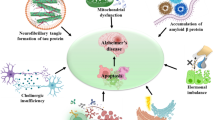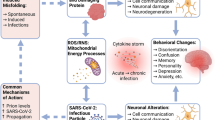Abstract
Increasing evidence supports an important role for metals in neurobiology. In fact, copper binding proteins that form bioinorganic complexes are able to display oxidant or anti-oxidant properties, which would impact on neuronal function or in the triggering of neurodegenerative process. Two proteins related to neurodegenerative diseases have been described as copper binding proteins: the amyloid precursor protein (APP), a protein related to Alzheimer's disease, and the Prion protein (PrP), related to Creutzfeldt-Jakob disease. We used different synthetic peptides from APP and PrP sequences in order to evaluate the ability to reduce copper. We observed that APP135−156, amyloid-β-peptide (Aβ1−40), and PrP59−91 all have copper reducing ability, with the APP135−156 peptide being more potent than the other fragments. Moreover, we identify His, Cys and Trp residues as key amino acids involved in the copper reduction of Aβ, APP and PrP, respectively. We postulated, that in a cellular context, the interaction of these proteins with copper could be necessary to reduce copper on plasma membrane, possibly presenting Cu(I) to the copper transporter, driving the delivery of this metal to antioxidant enzymes. Moreover, protein-metal complexes could be the catalytic centers for the formation of reactive oxygen species involved in the oxidative damage present both in Alzheimer's and Prion disease.
Similar content being viewed by others
References
Alvarez A, Opazo C, Alarcón R et al. 1997 Acetylcholinesterase promotes the aggregation of amyloid-β-peptide fragments by forming a complex with the growing fibrils. J Mol Biol, 272, 348-361.
Atwood CS, Moir RD, Huang X et al. 1998 Dramatic aggregation of Alzheimer Aβ by Cu(II) is induced by conditions representing physiological acidosis. J Biol Chem 273, 12817-12826.
Atwood CS, Scarpa RC, Huang X et al. 2000 Characterization of copper interactions with Alzheimer amyloid β peptides: identi-fication of an attomolar-affinity copper binding site on amyloid β1-42. J Neurochem 75, 1219-1233.
Brown DR, Clive C, Haswell SJ. 2001 Antioxidant activity related to copper binding of native prion protein. J Neurochem 76, 69-76.
Bush AI. 2000 Metals and neuroscience. Curr Opin Chem Biol 4, 184-191.
Castagne V, Gautschi M, Lefevre K et al. 1999 Relationships between neuronal death and the cellular redox status. Focus on the developing nervous system. Prog Neurobiol 59, 397-423.
Curtain CC, Ali F, Volitakis I et al. 2001 Alzheimer's disease amyloid-β binds copper and zinc to generate an allosterically ordered membrane-penetrating structure containing superoxide dismutase-like subunits. J Biol Chem, 276, 20466-20473.
Davies KJA, Delsignore MA, LIN SW. 1987 Protein damage and degradation by oxygen radicals. II. Modification of amino acids. J Biol Chem, 262, 9902-9907.
Dykalov SI, Vitek MP, Maples KR et al. 1999 Amyloid peptides do not form peptide derived free radicals spontaneously, but can enhance metal-catalyzed oxidation of hydroxylamines to nitroxides. J Biol Chem 274, 9392-9939.
Dyrks T, Dyrks E, Hartmann T, et al. 1992 Amyloidogenicity of βA4-bearing amyloid protein precursor fragments by metalcatayzed oxidation. J Biol Chem 267, 18210-18217.
Estevez AG, Crow JP, Sampson JB et al. 1999 Induction of nitric oxide-dependent apoptosis in motor neurons by zinc-deficient superoxide dismutase. Science 286, 2498-2500.
Frederickson CJ. 1989. Neurobiology of zinc and zinc-containing neurons. Int Rev Neurobiol 31, 145-238.
Frederickson CJ, Bush AI. 2001 Synaptically released zinc: physiological functions and pathological effects. Biometals 14, 353-366.
Hassett R, Kosman DJ. 1995 Evidence for Cu(II) reduction as a component of copper uptake by Saccharomyces cerevisiae. J Biol Chem, 270, 128-134.
Halliwell B, Gutteridge JMC. 1990 Role of free radicals and catalytic metal ions in human disease: an overview. Methods Enzymol 186, 1-85.
Hartter DE, Barnea 1988. Evidence for release of copper in the brain: depolarization-induced release of newly taken-up 67copper. Synapse 2, 412-415.
Hensley K, Carney JM, Mattson MP et al. 1994 A model for β-amyloid aggregation and neurotoxicity based on free radical generation by the peptide: relevance to Alzheimer disease. Proc Natl Acad Sci USA, 91, 3270-3274.
Hesse L, Beher D, Masters CL et al. 1994 The βA4 amyloid precursor protein binding to copper. FEBS Lett 349, 109-116.
Huang X, Atwood CS, Hartshorn MA et al. 1999a The Aβ peptide of Alzheimer's disease directly produces hydrogen peroxide through metal ion reduction. Biochemistry 38, 7609-7616.
Huang X, Cuajungco MP, Atwood CS et al. 1999b Cu(II) potentiation of Alzheimer Aβ neurotoxicity. Correlation with cell-free hydrogen peroxide production and metal reduction. J Biol Chem 274, 37111-37116.
Inestros, NC, Alvarez A, Perez CD et al. 1996 Acetylcholinesterase accelerates assembly of amyloid-β-peptides into Alzheimer's fibrils: possible role of the peripheral site of the enzyme. Neuron 16, 881-891.
Iversen LL, Mortishire-Smith J, Pollack SJ et al. 1995 The toxicity in vitro of β-amyloid protein. Biochem J 311, 1-16.
Jackson GS, Murray I, Hosszu LLP et al. 2001 Location and properties of metal-binding sites on the human prion protein. Proc Natl Acad Sci USA 98, 8531-8535
Lovell, MA, Robertson JD, Teesdale WJ et al. 1998 Copper, iron and zinc in Alzheimer's disease senile plaques. J Neurol Sci 158, 47-52.
Miranda MS, Opazo C, Larrondo LF et al. 2000 The role of oxidative stress in the toxicity induced by amyloid β-peptide in Alzheimer's disease. Prog Neurobiol 62, 633-648.
Multhaup G, Schlicksupp A, Hesse L et al. 1996 The amyloid precursor protein of Alzheimer's disease in the reduction of copper (II) to copper(I). Science 271, 1406-1409.
Multhaup G, Ruppert T, Schlicksupp A et al. 1998 Copper-binding amyloid precursor protein undergoes a site-specific fragmentation in the reduction of hydrogen peroxide. Biochemistry 37, 7224-7230.
Nunomura A, Perry G, Aliev G, et al. 2001 Oxidative damage is the earliest event in Alzheimer disease. J Neuropathol Exp Neurol 60, 759-767.
Nuñez MT, Garate MA, Arredondo M et al. 2000 The cellular mechanisms of body iron homeostasis. Biol Res 33, 133-142.
O'Halloran TV, Culotta VC. 2000 Metallochaperones, an intracellular shuttle service for metal ions. J Biol Chem 275, 25057-25060.
Opazo C, Ruiz FH, Inestrosa NC. 2000 Amyloid-β-peptide reduces copper(II) to copper(I) independent of its aggregation state. Biol Res 33, 125-131.
Praticò D, Uryu K, Leight S et al. 2001 Increased lipid peroxidation precedes amyloid plaque formation in an animal model of Alzheimer amyloidosis. J Neurosci 21, 4183-4187.
Prusiner SB (1991) Molecular biology of prion diseases. Science 252, 1515-1522.
Rae TD, Schmidt PJ, Pufhal RA et al. 1999 Undetectable intracellular free copper: the requirement of a copper chaperone for superoxide dismutase. Science 284, 805-808.
Rosenzweig AC, O'Halloran TV. 2000 Structure and chemistry of the copper chaperone proteins. Curr Opin Chem Biol 4, 140-147.
Ruiz FH, Gonzale, M, Bodini M et al. 1999 Cysteine 144 is a key residue in the copper reduction by the β-amyloid precursor protein. J Neurochem 73, 1288-1292.
Ruiz FH, Silva E, Inestrosa NC. 2000 The N-terminal tandem repeat region of human prion protein reduces copper: role of tryptophan residues. Biochem Biophys Res Commun 269, 491-495.
Sayre LM, Perry G, Smith MA. 1999 Redox metals and neurodegenerative disease. Curr Opin Chem Biol 3, 220-225.
Selkoe DJ. 1997 Alzheimer's disease: genotypes, phenotypes, and treatments. Science 275, 630-631.
Smith MA, Perry G, Richey PL et al. 1996 Oxidative damage in Alzheimer's disease. Nature 382, 120-121.
Smith MA, Hirai K, Hsiao K et al. 1998 Amyloid-β deposition in Alzheimer transgenic mice is associated with oxidative stress. J Neurochem 70, 2212-2215.
Stahl N, Borchelt DR, Hsiao K et al. 1987 Scrapie prion protein cantains a phosphatidylinositol glycolipid. Cell 51, 229-240.
Stockel J, Safar J, Wallace AC et al. 1998 Prion protein selectively binds Copper (II) ions. Biochemistry 37, 7185-7193.
Wadsworth JDF, Hill AF, Joiner S et al. 1999 Strain-specific prionprotein conformation determined by metal ions. Nat Cell Biol 1, 55-59.
Zhou B, Gitschier J. 1997 hCTR1: a human gene for copper uptake identified by complementation in yeast. Proc Natl Acad Sci USA. 94, 7481-7486.
Author information
Authors and Affiliations
Rights and permissions
About this article
Cite this article
Opazo, C., Barría, M.I., Ruiz, F.H. et al. Copper reduction by copper binding proteins and its relation to neurodegenerative diseases. Biometals 16, 91–98 (2003). https://doi.org/10.1023/A:1020795422185
Issue Date:
DOI: https://doi.org/10.1023/A:1020795422185




